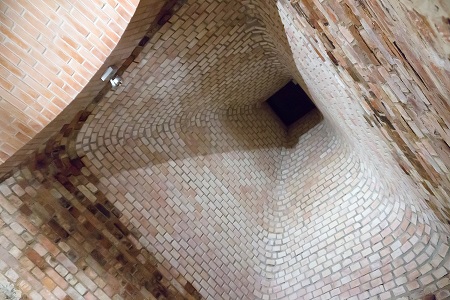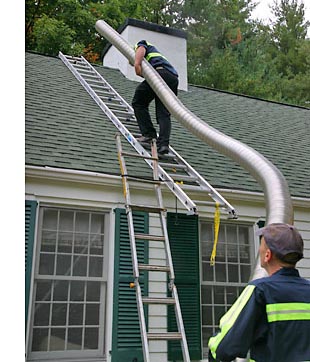Causes of Flue Liner Damage, How to Identify & Repair
 The condition of the flue liner in your chimney is a critical safety issue. One of the most important reasons chimney experts recommend annual chimney inspections is to ensure that the liner is doing the job of protecting combustibles from extremely hot temperatures. Well-built chimneys that aren’t subjected to excess amounts of moisture are highly durable on the exterior. There are, however, many different factors that frequently cause the lining to deteriorate much more quickly, requiring repair or replacement.
The condition of the flue liner in your chimney is a critical safety issue. One of the most important reasons chimney experts recommend annual chimney inspections is to ensure that the liner is doing the job of protecting combustibles from extremely hot temperatures. Well-built chimneys that aren’t subjected to excess amounts of moisture are highly durable on the exterior. There are, however, many different factors that frequently cause the lining to deteriorate much more quickly, requiring repair or replacement.
Common Causes of Damage to Flue Liners
A damaged flue liner is dangerous because it can cause a house fire. There are a number of common causes of flue liner damage in chimneys. The following are a few:
- There is improper construction.
- Corrosive byproducts of combustion cause deterioration. Flue gases are acidic, and they speed up deterioration of mortar joints.
- The lining is the wrong size for the appliance, which can cause an excessive amount of creosote buildup. Mixed with moisture, creosote can speed up flue liner deterioration.
Signs that a Flue Liner is Damaged
Unfortunately, there are usually no obvious signs of chimney liner damage. In some cases, you may notice broken masonry in your fireplace. The debris could be bits of deteriorating flue liner that have dropped into the firebox. Because it is usually not obvious that a liner needs repair, it’s important to have a reputable chimney technician inspect the flue annually. Chimney inspections are the best defense against unsafe chimney conditions.
How a Damaged Flue Liner is Repaired
When a chimney is initially built, the flue liner is usually made with tiles because they are the most inexpensive option. When the tiles become damaged, repair is extremely difficult, even requiring partial teardown of the chimney to accomplish. While repair is possible, it is usually an option that is simply not cost-effective.
When it’s Time for Flue Liner Replacement
When it doesn’t make sense to repair a damaged flue, replacement is needed. The most affordable and at the same time most effective way to replace a damaged flue liner is with a stainless steel liner. The following are benefits of stainless steel chimney liners:
 Stainless steel liners are resistant to corrosion, which makes them highly durable.
Stainless steel liners are resistant to corrosion, which makes them highly durable.- Fewer repairs are needed, and the liner protects your masonry from damaging emissions.
- Compared to traditional chimney liners, stainless steel chimney liners are affordable.
- They are far easier to install than clay tile liners, making initial installation far less expensive.
- The round shape makes them easier to clean.
- Stainless steel liners are sealed and smooth.
- Insulation is placed between the liner and the chimney walls. The added insulation helps the fireplace operate more effectively, keeping the air hot until it exits the chimney.
Professional installation of a stainless steel chimney liner is important, to ensure that it is the correct size and will operate properly. Contact our chimney technicians today to schedule a chimney inspection, flue liner repair, or flue liner replacement.


